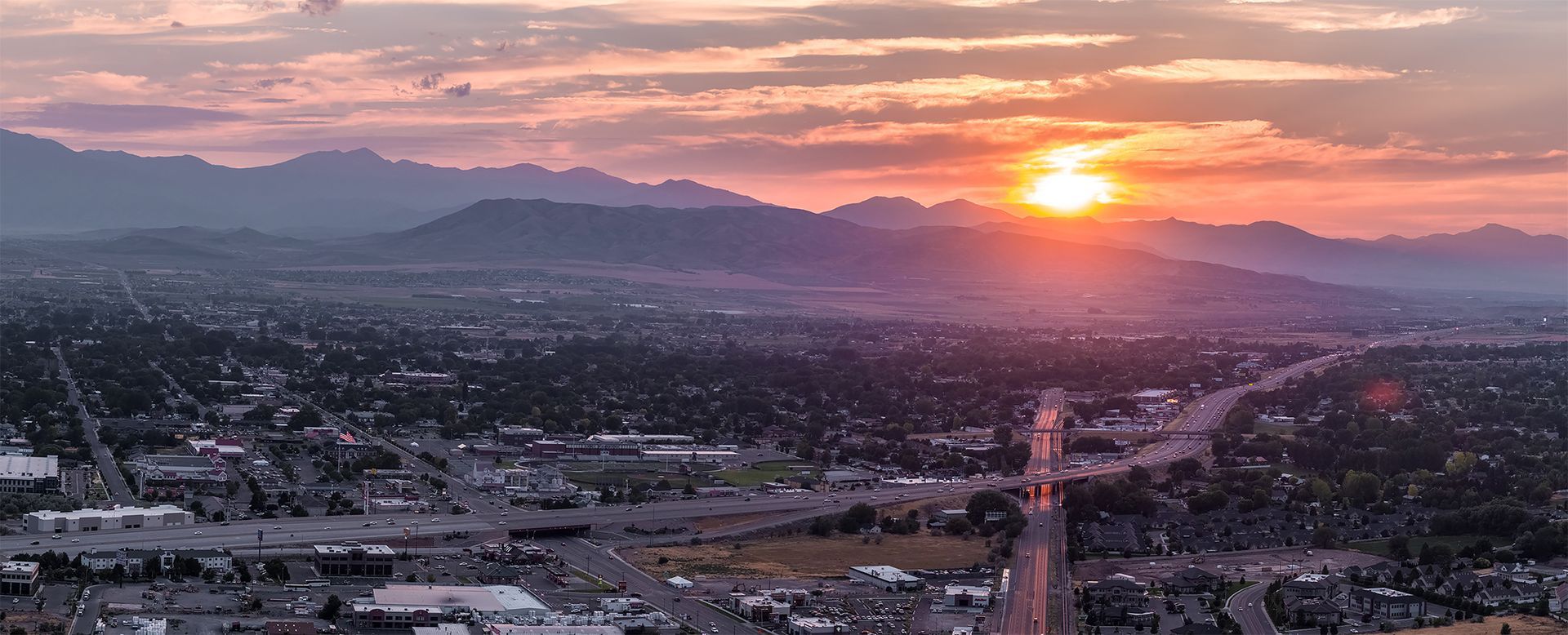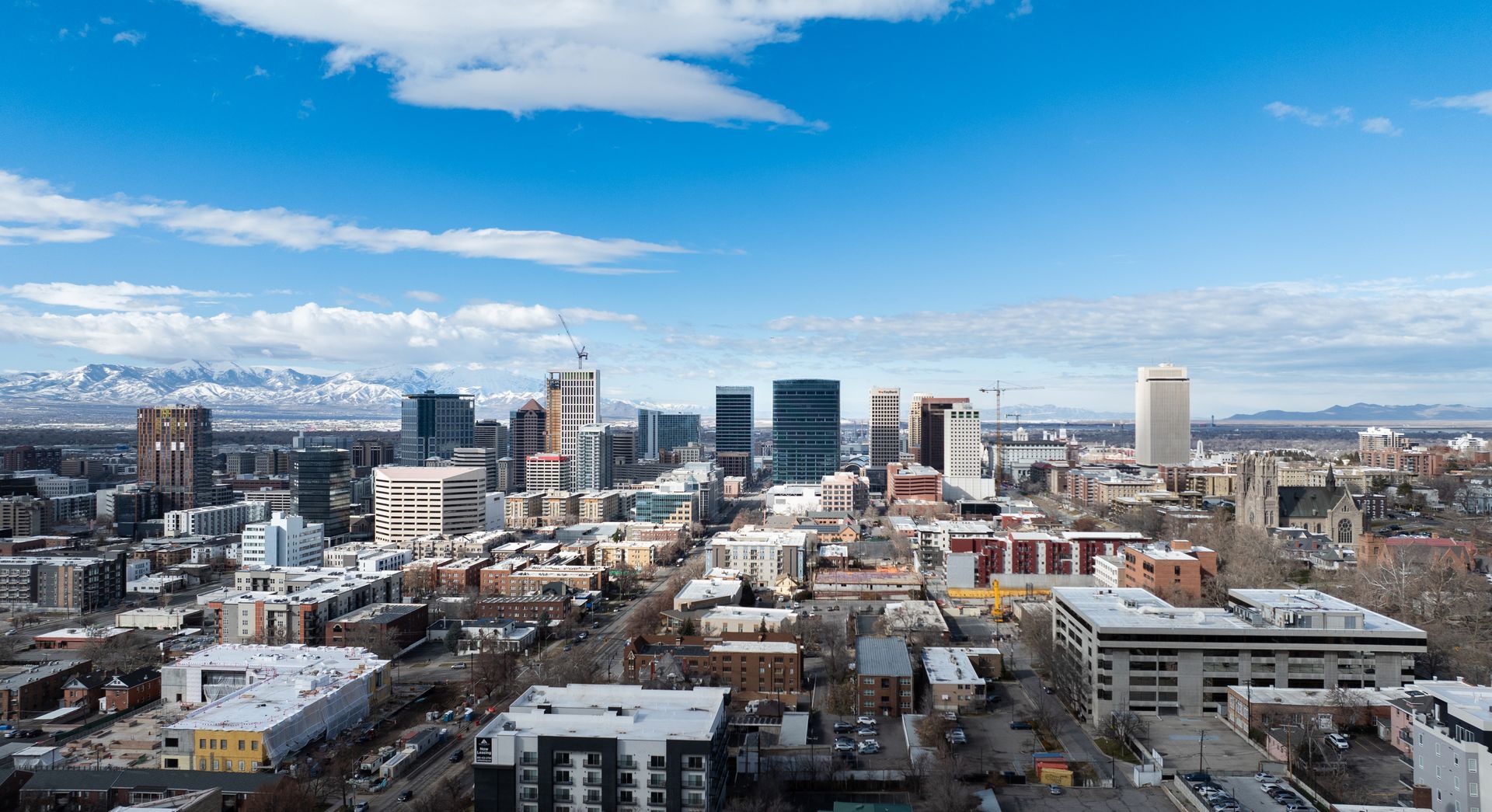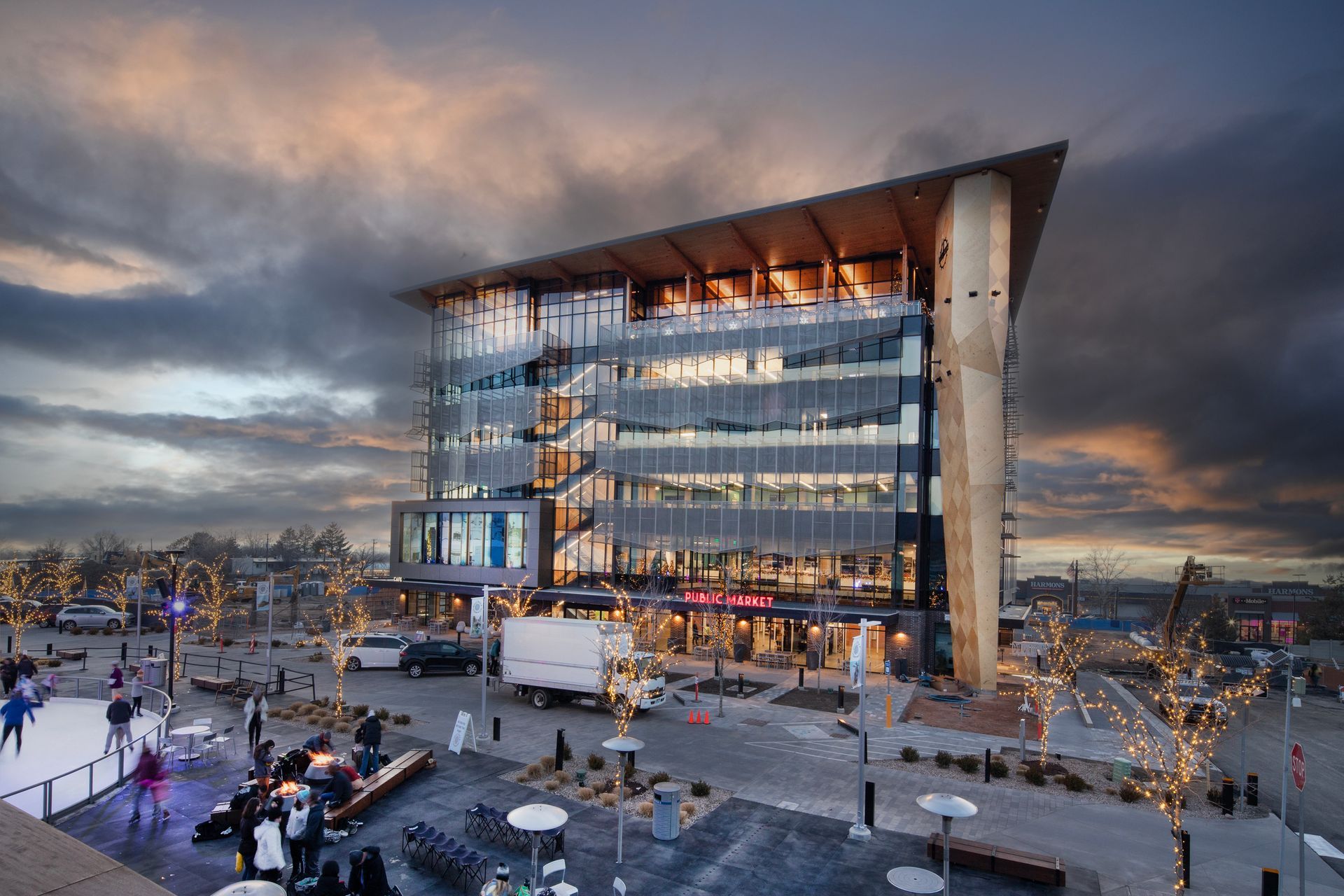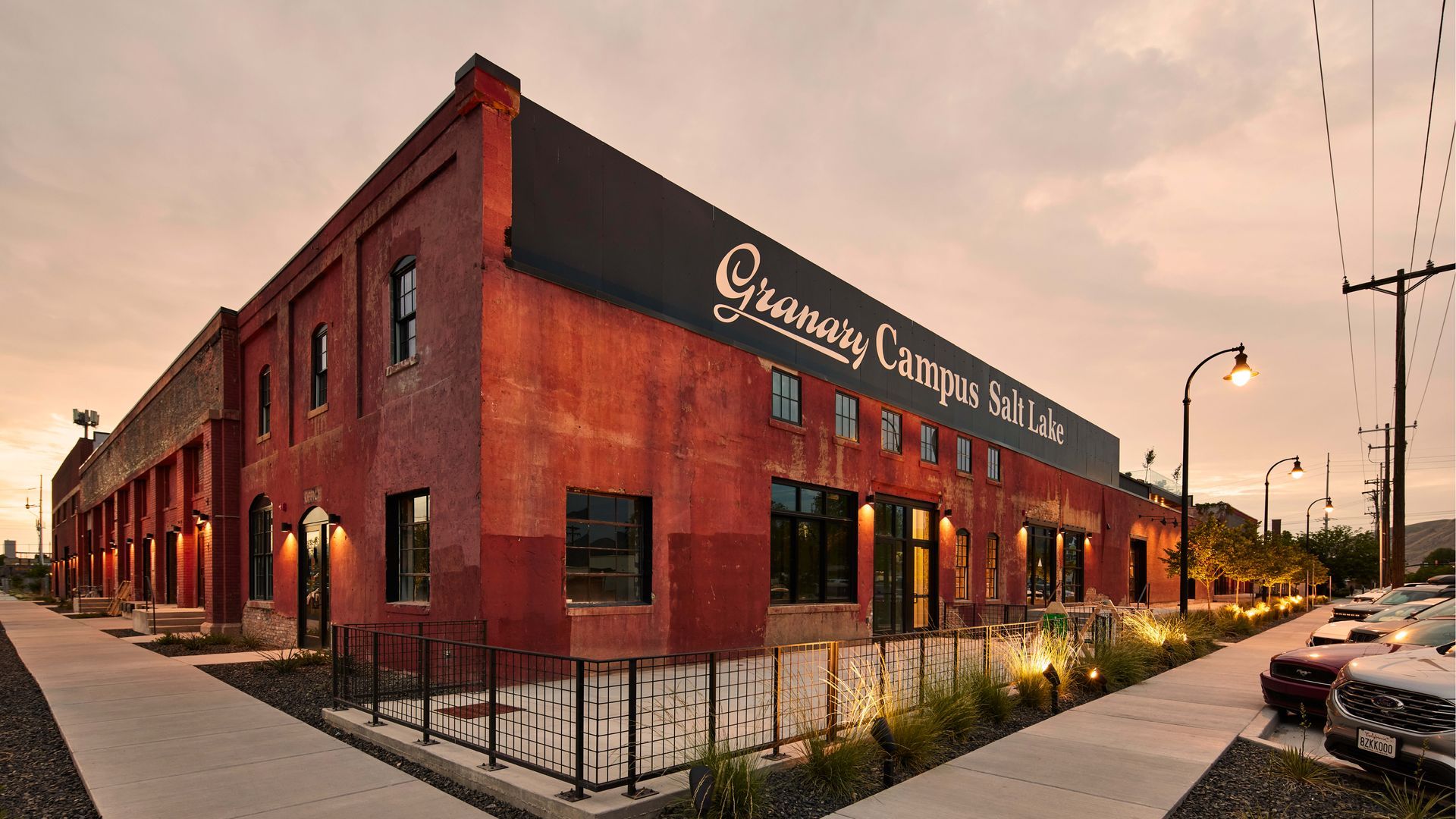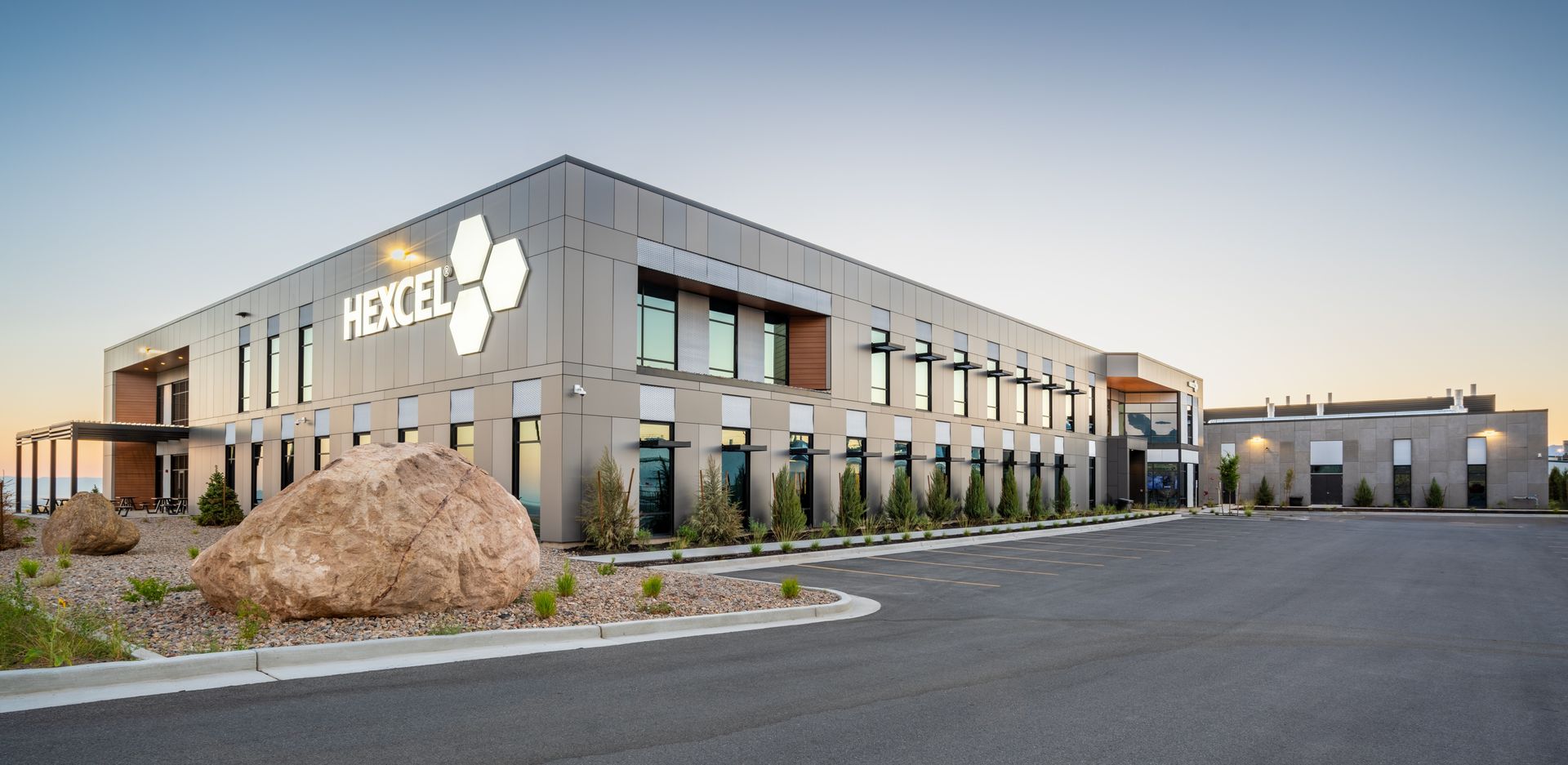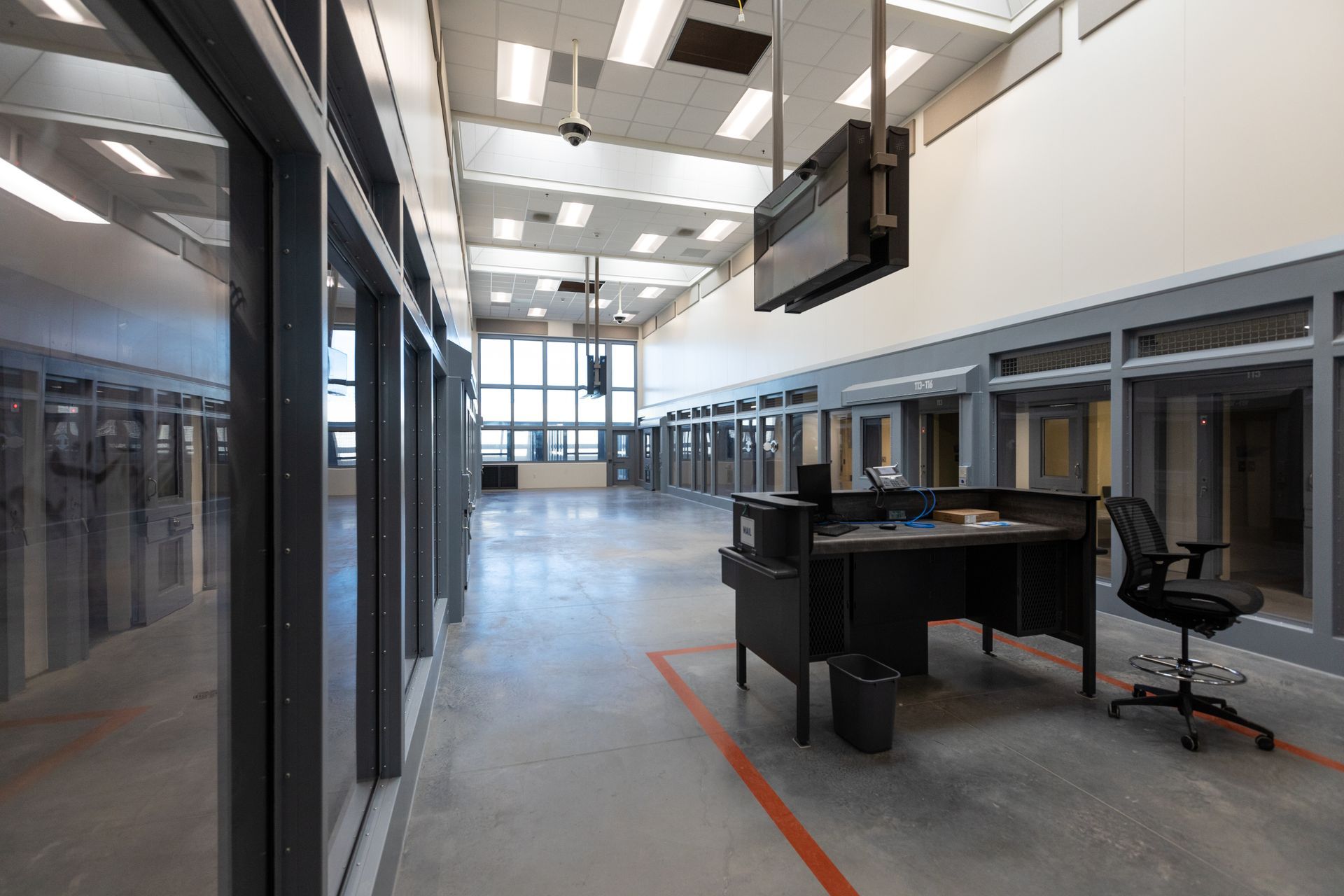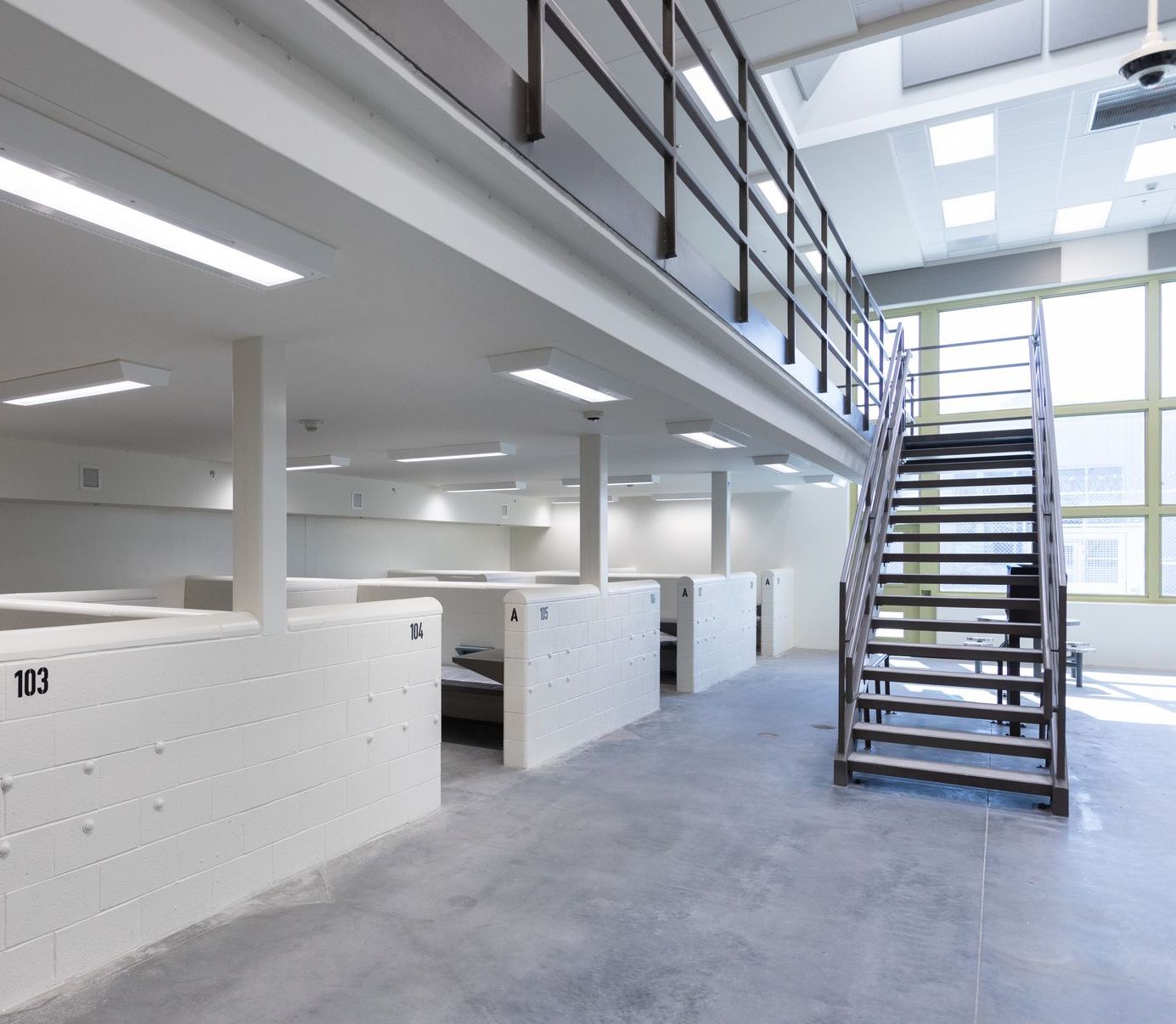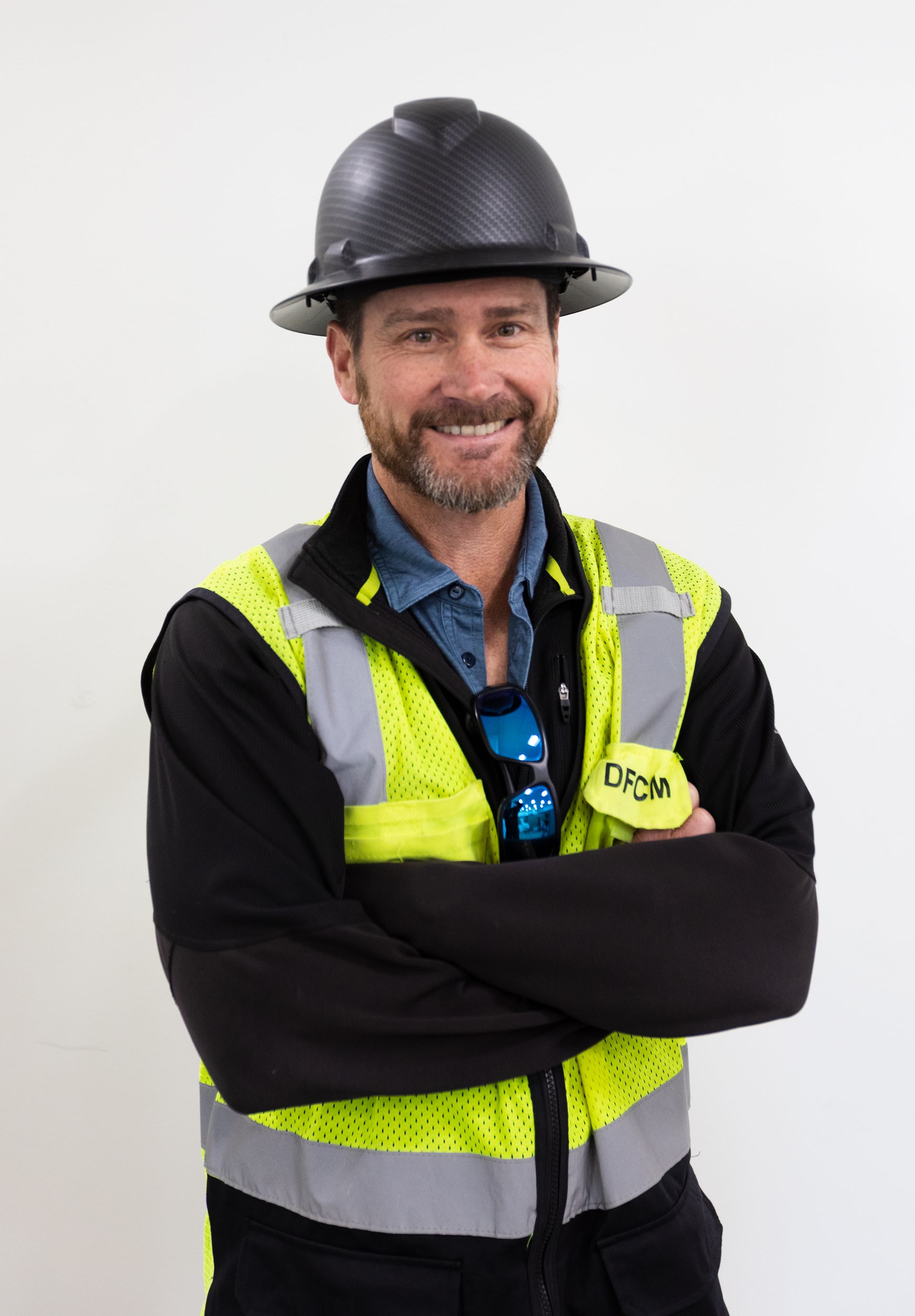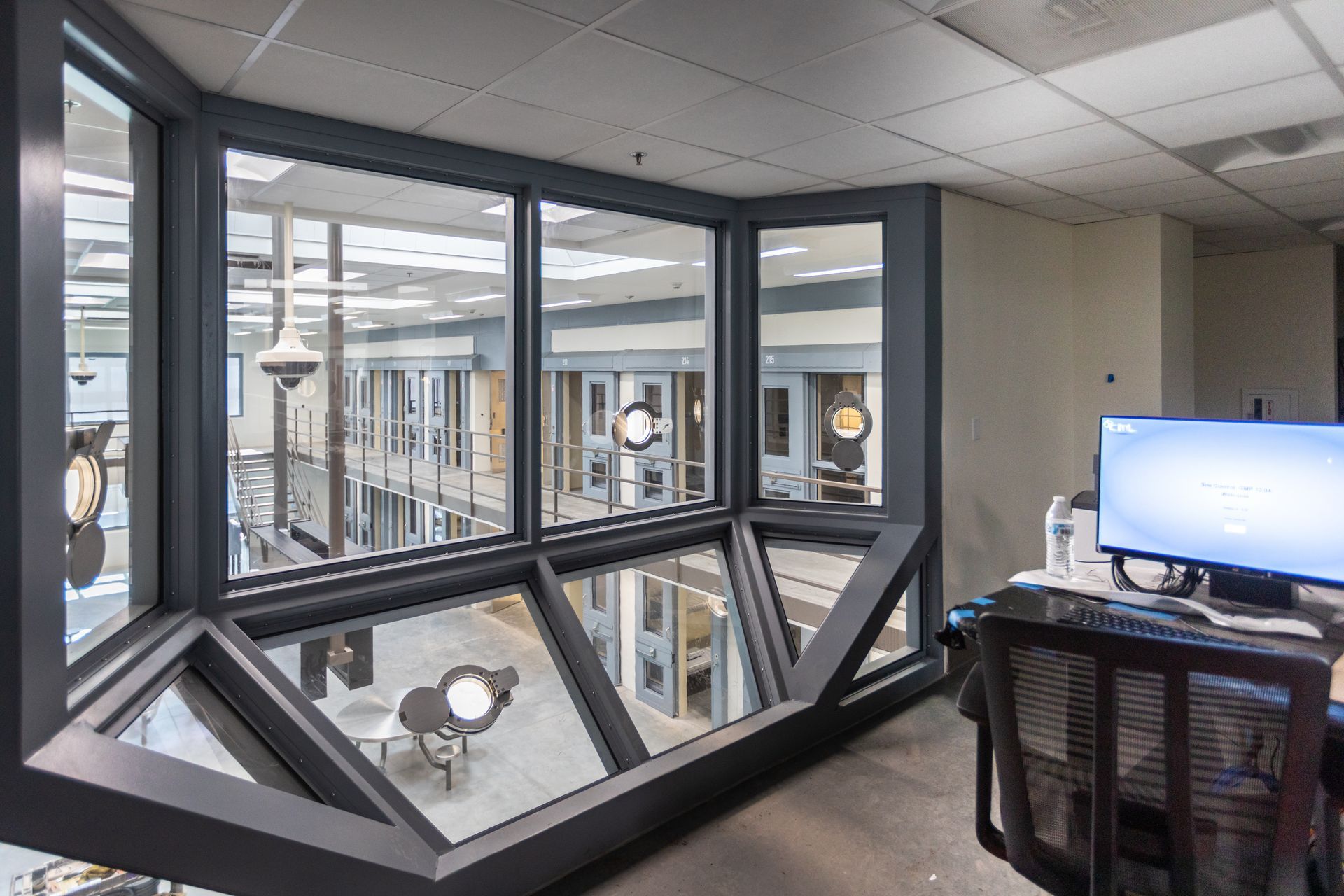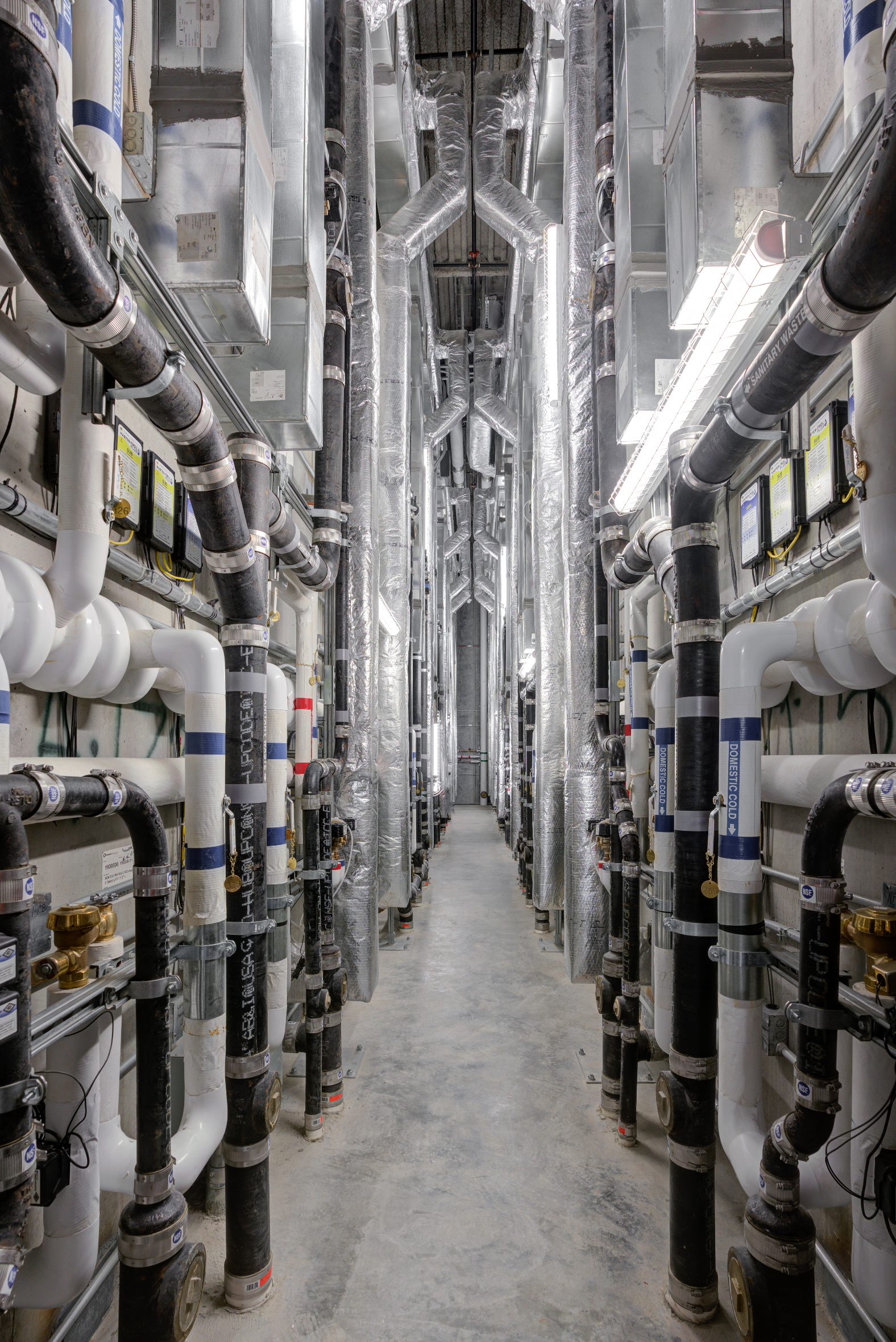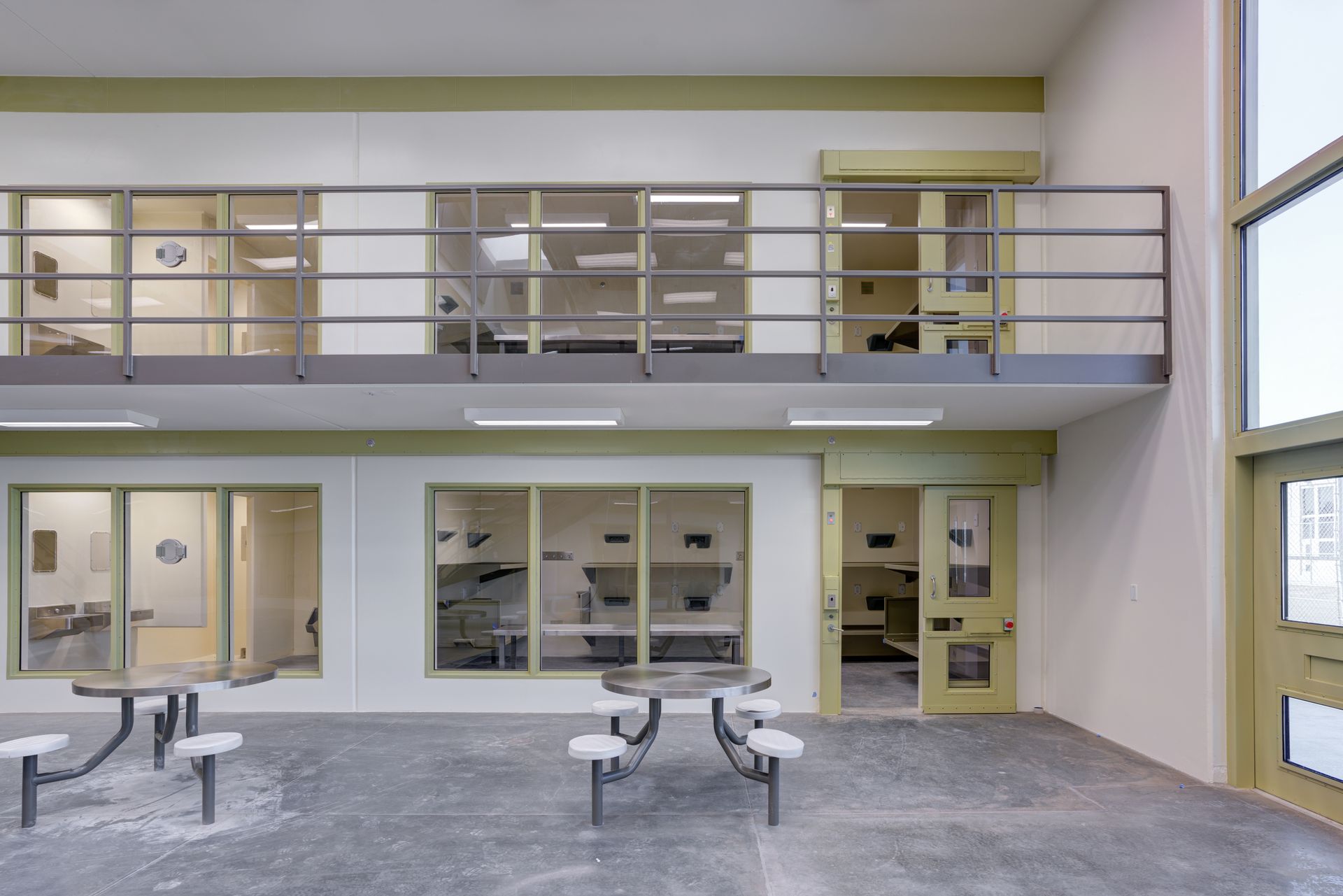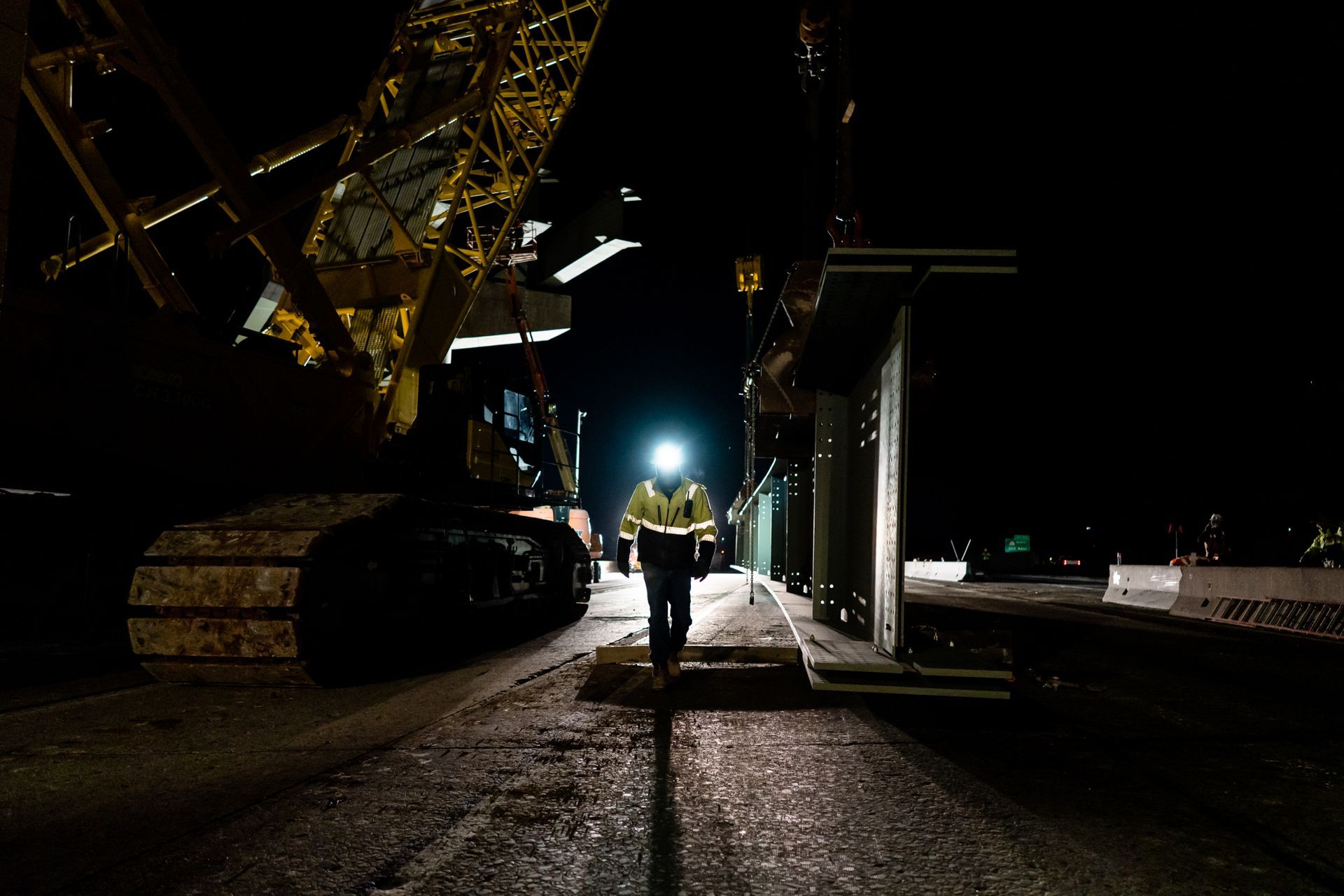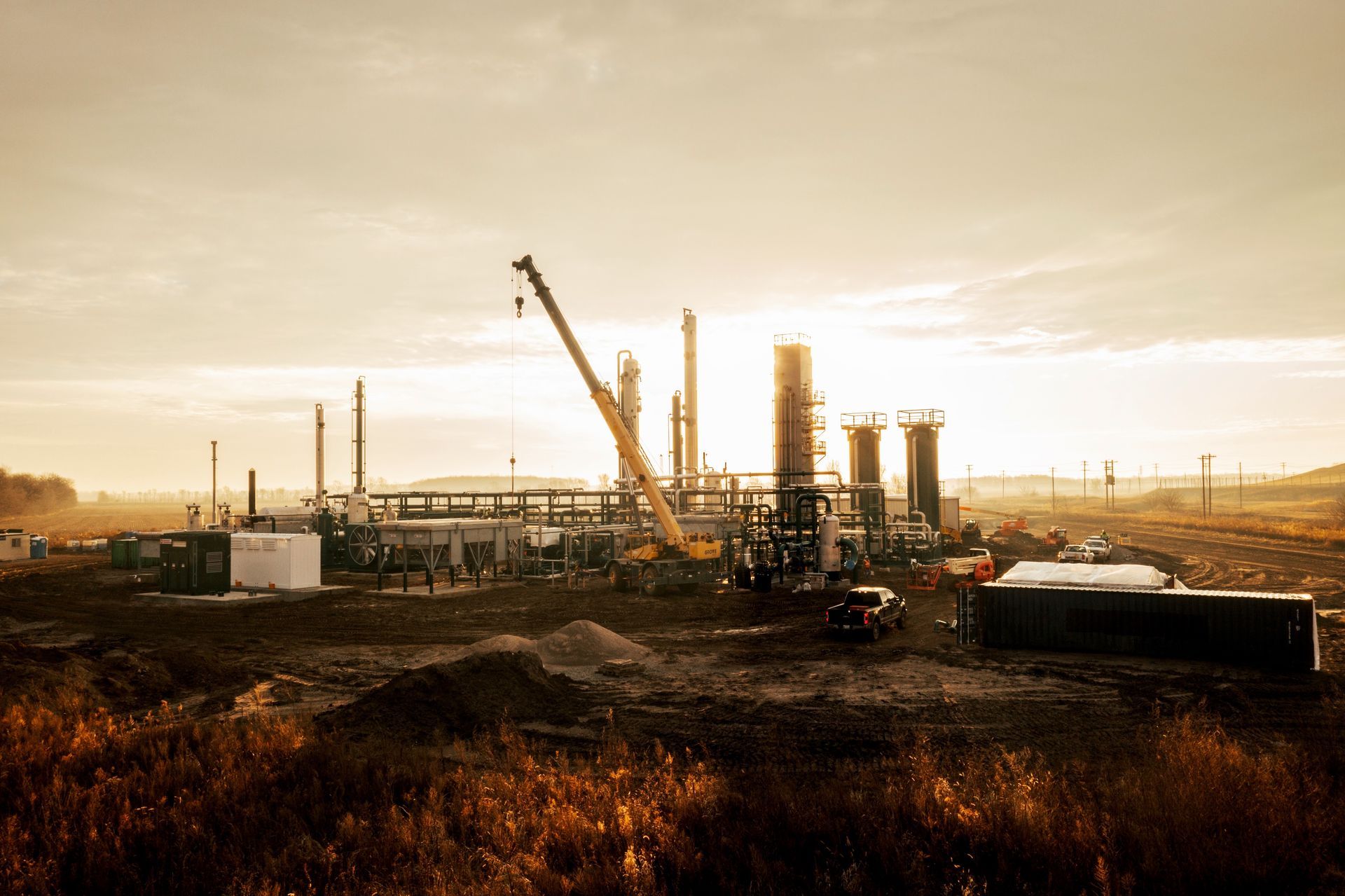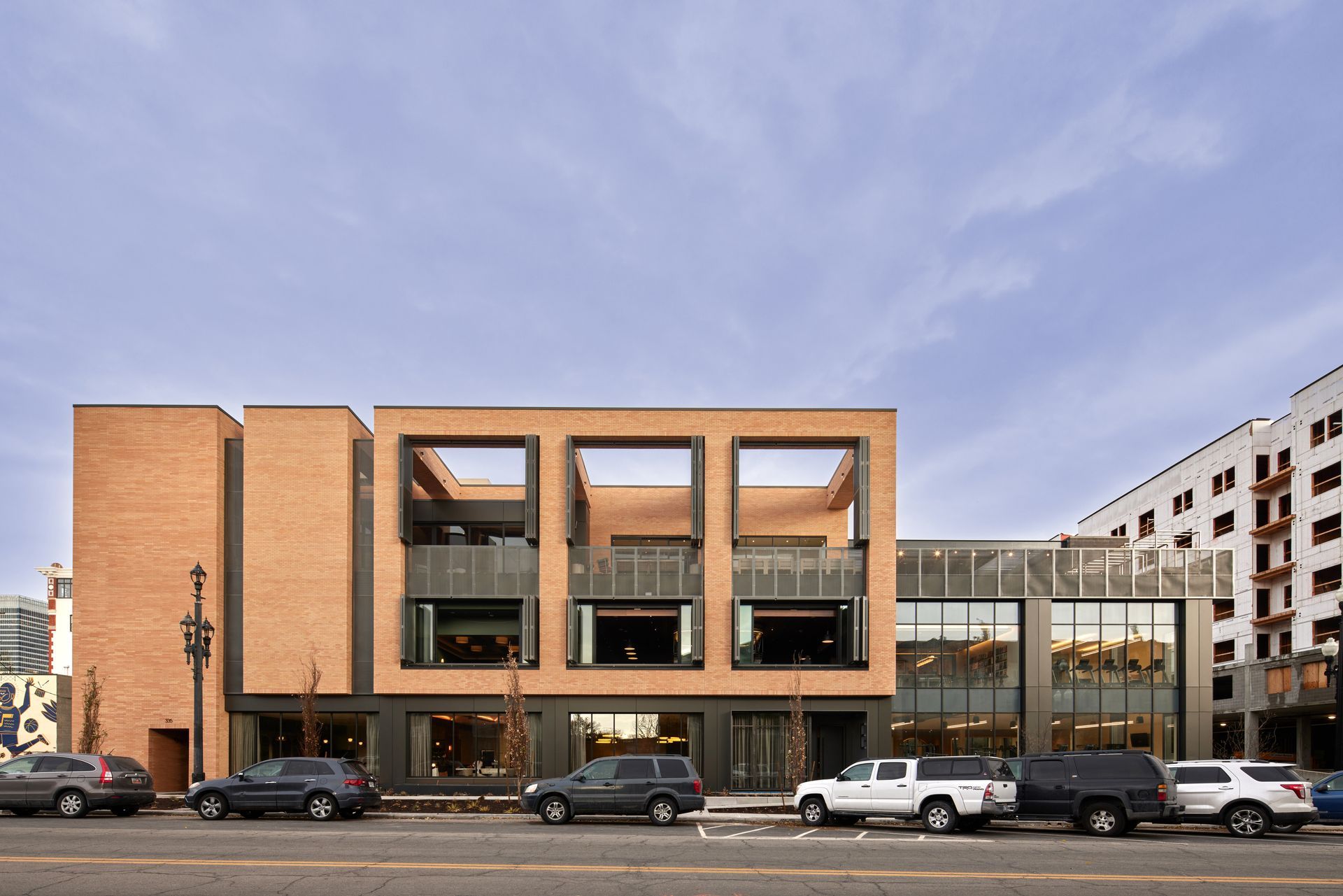The massive new $1.05 billion Utah State Correctional Facility was designed and constructed with an eye towards turning the corner on recidivism rates, and genuinely providing a better atmosphere for offenders and officers alike. By Brad Fullmer
As he reflected recently upon the design of the new $1.05 billion ($825 million construction cost), 37-building Utah State Correctional Facility (USCF) compound west of the Salt Lake International Airport off I-80—built to house up to 3,600 offenders but with a current population just under 2,500—Kevin Miller recalled a trip he took to Grand Junction, Colorado, in 1992 to tour the newly completed Mesa County Jail, which was designed as a direct supervision facility.
Miller, who was only four years into his career at Salt Lake-based GSBS Architects, was riding in the back of a state-owned Ford Econoline van and chatting up then Utah County Jail Commander, Owen Quarnberg, about his decision to push for a similar design type, despite it requiring more staff to operate than an indirect supervision model, which meant increased operational costs.
“It was a significant outlier because of its direct supervision model—I had never been exposed to anything other than indirect supervision [design],” recalled Miller of local correctional facilities at the time. “I said to him, ‘Owen, why on earth do you want to go for this direct supervision model, which requires more money for staffing, putting officers on the floor in the middle of dangerous people […] everything I had in my head about jail design at the time. Why make this seemingly preposterous decision? He said to me, ‘If I can change one person, I’ve done good’.”
“That moved me,” said Miller, who is one of the foremost authorities in Utah on correctional facility design, having contributed his expertise to 20-plus projects of significance and another dozen minor remodels in Utah, Idaho, and Wyoming, plus a project for Navajo nation in Arizona. “That was the essence of it. It’s not about how cheaply to house 3,600 [offenders]. It’s out of those 3,600, can we fix one, or two, or ten. Or all of them. That’s what moves the needle. At this juncture, I’ve housed—by virtue of my designs—thousands of (offenders). I want to fix some—I don’t want to just house them.”
The enormous new correctional facility compound—which replaces the long-outdated Utah State Prison (opened in 1951, replacing the Sugar House Prison) previously located at the south end of the Salt Lake Valley—was designed not only as a more occupant-friendly, direct supervision facility, but one that hopefully reduces recidivism rates and provides a better day-to-day environment for offenders and the officers that oversee them.
“It was a monster of a project,” said Mike Ambre of the combined 1.3 million SF compound. Ambre, Assistant Director of Special Projects for the State of Utah Division of Facilities Construction and Management (DFCM), carried perhaps the heaviest load out of the hundreds of people involved with this facility over the past six-plus years.
Most people, he says, simply call him “hombre" (Spanish for “man”), a playful twist on his last name, one that was strikingly accurate on this project—Ambre was “the man.”
“He was the boss out there,” said John Branson, former Principal of GSBS Architects (now a Principal at Salt Lake-based Babcock Design) and one of the main USCF designers, of Ambre. “Mike’s direct responsibility was the entire prison—he had an immense load on his shoulders.”
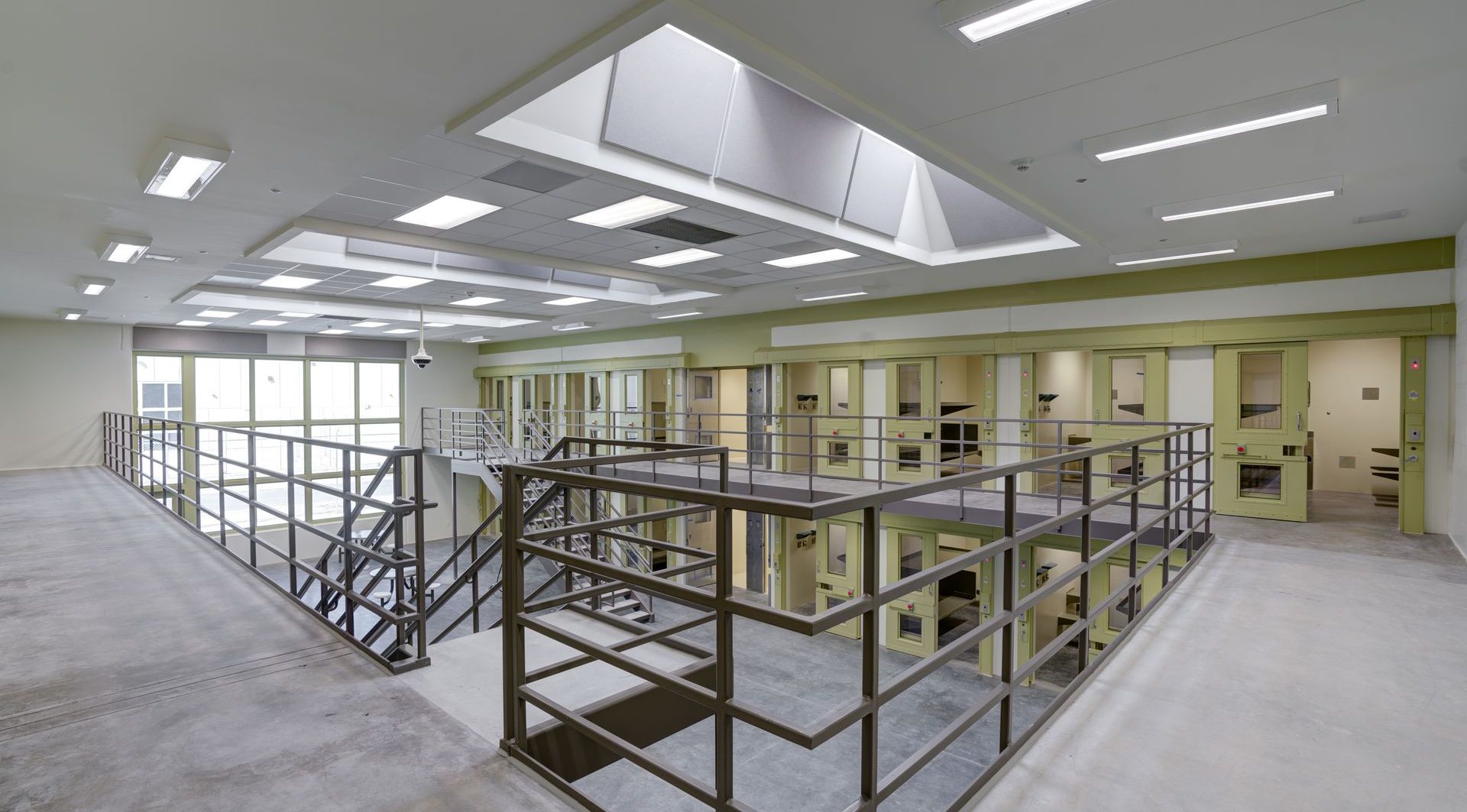
Indirect vs. Direct Supervision Models
According to a 2006 report by the Worcester Polytechnic Institute titled Correctional Facility Analysis and Design, a modern-day correctional facility compound (prison) has five primary purposes:
1) Housing people who cannot function within the boundaries of a law-abiding society.
2) Protecting the general public from dangerous, potentially life-altering/threatening situations.
3) Reformation of offenders (prisoners), which translates into the structure having space allocated for education, social training, religious studies, solitary confinement, etc.
4) Attempt to “cure” offenders of addictions and other mental health challenges through therapy, group activities.
5) Stand as a public symbol of moral, political, and social virtue.
Correctional facility design in the U.S. has morphed considerably during this country’s 246-year history, but outside of modern technological advances, many facilities—particularly those that employ the indirect supervision model—are strikingly similar to those built during the country’s early days.
The massive Eastern State Penitentiary (ESP, also called Cherry Hill) in Philadelphia operated from 1829 to 1971 and is one of the first notable examples of an indirect supervision correctional facility. Widely considered the world’s first true penitentiary, at the time it was the largest and most expensive public building in the U.S.
Designed by British architect John Haviland, ESP (original capacity 450) became known for its “hub and spoke” design—an octagonal tower in the center connected via corridors to radiating cell blocks, which Haviland said offered watching, convenience, economy, and ventilation.
In 1930s and 40s ‘telephone pole’ design became popular. This design has a central corridor with housing wings built at 90 degrees from the corridor. The Utah State Prison was built in this manner.
The first direct supervision correctional facility opened in 1981 in Contra Costa, California, the result of a competition by the Federal Bureau of Prisons between three firms, each of which came up with similar designs. The “podular remote” cellblock design of direct supervision models places officers in direct, constant contact with offenders, allowing them to interact on a more personal level and respond to trouble before it escalates. Officers have more responsibility for the organization, supervision and control of the daily operation of a direct supervision housing unit. Direct supervision has been credited with reducing vandalism, enhancing safety, and creating a more positive environment for offenders and officers. By 1983, direct supervision was formally recognized by the National Institute of Corrections.
In Utah and much of the surrounding Intermountain region, Miller said indirect supervision has been the predominant design model chosen by state and local government entities, primarily because of a more cost-effective staff-to-offender ratio of 1 to 244 (one officer can “supervise” 244 offenders) vs. 1 to 64 for direct supervision. The result? Indirect supervision has posted horrible long-term results in reducing recidivism and reforming offenders, according to several correctional facility studies over the past two decades.
Miller, frankly, had little appetite to be involved with the design of USCF if the Utah Department of Corrections (DOC) and DFCM had chosen the indirect supervision model, despite his lengthy experience and interest with the building type.
“If it was an indirect supervision jail, I knew what to do—there’s not a lot of mystery, not a lot of ground to explore,” said Miller. The idea of ‘how many bodies can I squeeze into as little square footage as I can?’,” was unappealing. He had a realization of the ineffectiveness of that model in accomplishing any good, other than simply housing “bad people”.
“Hey, I can keep doing this, but to what purpose? “ he said. “You get to a certain point in your career that you start to treasure the opportunities you can make.”
Miller continued, “Our Department of Corrections, our state, had a more progressive vision, an idea that maybe we can do something different, was intriguing to me and, ultimately, it inspired me to really throw myself into the design of the facility and in trying to solve the problem in a way that really hunted towards those goals. That is rewarding.”
Once leaders from the DOC and DFCM determined the new USCF would be a direct supervision model, architects pursued every avenue to make the sprawling compound more humane.
Miller specifically mentioned natural daylighting as a major design driver, along with creating spaces that offer a more “normal” existence. There was a lot of give and take between designers and the DOC; not every proposed design idea was accepted, but enough were to tip the scales.
“It’s prison—let’s be clear,” said Miller. “We have a fundamental obligation to make it safe and secure for offenders and for the officers. You cannot sacrifice safety and security—that is job one.” For both groups “the humanity of the facility is really important,” Miller said. “For 12 hours a day, [officers] are locked inside the facility in the same way as offenders. When the public thinks about the prison costs and the design attributes we desire to include—they get upset about how ‘nice’ they are—they are overlooking the circumstances of the offenders and the officers.”
He continued, “Daylight was a huge deal for us from the get-go. One of the real breakthroughs in the design was shifting to what everybody refers to as the linear model of housing—cells are arranged on either side of a rectangle around a dayroom. And at one end of the dayroom is a large window that looks out at the world—that’s true from the highest security housing sections to the lowest security housing sections. Every [section] is organized around the same premise. They have unique characteristics, but they all have that fundamental premise of being able to connect to the outside world. That is very, very unique. Everybody who has seen it has loved it.”
Each building unit features different housing styles: eight-person cells, two-person cells, and dormitory style—which offers an increased measure of privacy.
Daylighting is widely considered a top design consideration for most projects, but “when it comes to detention, we consider other things more important,” Miller added. “[Daylighting] was on everybody’s mind from the very beginning. We were able to accomplish that in significant ways.”
The second main design initiative, Miller said, “was to the greatest extent possible, normalize behavior. Prison is an abnormal environment and the further down the rabbit hole of prison design you get, the more abnormal it becomes.”
Miller continued, “The folks in our prison system, on average, are back on the streets (or reincarcerated) after 2.5 years. They have not been given skills to manage life on the outside. We wanted to normalize behavior. Even though you’re in prison, we want you to be responsible for as much of your actions and behavior as possible.”
With the indirect supervision model, the overriding principle is that services are taken to the offenders in their cells—food, medications, even visitation is done via video monitors, so offenders don’t ever leave the main unit they’re housed in.
With the new USCF, everything is a “go-to” destination for offenders in the general population. “You leave your housing unit, walk to the dining hall, and walk back,” said Miller. “Food, medical (treatment), visitations, education, programming, religious studies—all of these aspects are designed to be as normalized behavior as we can make them, while maintaining safety and security inside the cell.”
Challenging Site Required Extensive Infrastructure Design
Because of USCF’s location near the Great Salt Lake, soil conditions offered huge initial challenges in getting the site stabilized before infrastructure and vertical construction could even happen. Because of the complexity of each utility system, civil engineers determined it was necessary to 3D model each system to minimize conflicts during construction. Infrastructure included 10+ miles of roadway split between seven miles of new vehicular roadways and another four miles of pedestrian corridors, seven miles of sanitary sewer force main in the Northwest Quadrant to service the new facility, as well as anticipated future development in the Northwest Quadrant. On-site storm drain infrastructure included a pre- vs. post-storm drain analysis, factoring in various Great Salt Lake elevations. Five acre-feet of detention was incorporated into the site to reduce the discharge to the pre-developed flow. Engineers also completed the design and modeling of separate culinary and fire distribution systems. The modeling included culinary service for a population of 5,000 individuals (offenders, officers, staff, and visitors) distributed through approximately 180 developed acres and 31 buildings.
Environmental services included Wetland and Waters of the U.S. Delineations, Class I and Class III Cultural Resource Inventories, and coordination with U.S. Army Corps of Engineers and State Historic Preservation Office (SHPO). The compound includes a 2MG water tank with an associated pump station, a regional gas meter farm, a regional power substation, and a sanitary sewer screening facility on site.
Because of the location so close to the shores of the Great Salt Lake, and the high corrosivity of the soils, the site required extensive protection for all the underground utilities. This included 7.5 miles of new 24-in. waterline along the roadway, 13 miles of 16-in. and 18-in. sewer force main, and 1,800 ft. of gravity sewer line. Nearly one million cubic yds of fill was required just to bring the site to grade.
Electrical infrastructure was also substantial and included a wide array of design aspects, including a new electrical substation, a large central plant, a highly redundant power system from the substation to each critical on-site building, underground 15kV distribution in looped configuration, and complex power, lighting, fire alarm, and AV/IT systems. The system includes over 25,000 LF of two-way, four-way, and six-way underground duct banks, multiple substation transformers, a 10 MW medium voltage backup generator plant, and a campus wide SCADA load management system, all of which is vital to ensure continuous power availability for this critical facility.
The complex CM/GC joint venture involved coordination between multiple electrical contractors, dozens of phased bid packages, and coordination with half a dozen or more building engineers.
The schedule was aided by the utilization of precast concrete cells which were prefabricated at an off-site casting yard by Ogden-based Oldcastle Precast. Once on-site, the cells were finished with fixture installation and other aesthetic finishes. Electrical and mechanical stubouts were provided for final connection to the building systems.
Lower security housing units feature dorm-style beds for increased privacy (photo by Sohm Photografx). Mike Ambre (Photo above)—everyone calls him ‘hombre’—was indeed ‘the man’ for DFCM Utah on this project, investing six-plus years of his career and interacting with literally hundreds of people from the Utah Department of Corrections, the Utah legislature, and the local A/E/C community. Highly complex systems like this massive mechanical room are a hallmark throughout the complex and required the expertise of dozens of reliable, skilled trade partners
Getting Real About Final Cost; Construction Teams Overcome Myriad Challenges
The Utah State Legislature originally approved plans for the new USCF in August 2015, with a budget of $550 million, which quickly grew to $690 million, and ultimately topped the billion-dollar mark by the time of final completion in May 2022.
Ambre said the project—which broke ground in December 2017—started slowly, with the schedule bogged down somewhat due to funding challenges and procurement timelines. Eventually, the state legislature recognized the need to provide more funding for the project to prevent schedule delays.
“The legislature and everybody else saw the writing on the wall and when they came to grips with the real cost there was a pendulum swing overnight,” said Ambre about receiving adequate funding. “That helped a lot with morale.”
The state hired the joint venture team of Big-D Construction of Salt Lake and Phoenix-based Kitchell Corp. to review designs, track cost estimates, evaluate bids, and help with overall project management. while a second joint venture team of Salt Lake-based Okland Construction and Sandy-based Layton Construction served as CM/GC.
Joint venture projects are typically challenging due to sheer size and scope factors, in addition to trying to meld diverse company cultures between firms that are typically fierce competitors. On USCF, top project executives from both Okland and Layton said there was an emphasis from the beginning to get all team members working together so as to mitigate schedule delays while maintaining premium quality.
“We knew it was important to integrate and act as a single team,” said Shauna Deskins, Sr. Project Manager for Okland. “We knew we would be asking people to get uncomfortable and work in uncharted territory.
“A joint venture is always a challenge bringing cultures together and getting everybody on the same page,” added Dave Whimpey, Construction Manager for Layton. “Our management teams were integrated and worked together. A bid package team may consist of a Layton project manager and an Okland superintendent, with a project engineer from each company. I believe the way we integrated our teams created a spirit of teamwork. We tried to focus on our similarities. We realized we’re more alike than we are different.”
The scope of the project was unlike anything the state and even some of the contractors had built previously.
“It is a one-of-a-kind facility with a lot of firsts on this project,” said Deskins of the complex infrastructure and massive scope. “It’s like a little city.”
The construction team broke the entire complex down into individual projects, which was critical to keep it on schedule.
“In trying to manage a project of this size you have to break it down into pieces,” said Whimpey. “With 30-plus buildings on a 200-acre site, each building had its own set of plans and documents and we had individual teams to manage each project. In some cases, we had multiple buildings in one package. It was figuring out what makes the most sense in trying to eat it one slice at a time.”
The project was in full-swing when the Covid-19 pandemic struck in March 2020, sending initial shockwaves that caused significant concern among leaders on how to keep the project moving forward, while ensuring the health and safety of a workforce that reached 1,500 during peak construction times. Complex electrical and mechanical systems (plumbing and HVAC) required seven different contractors per trade, illustrating the massive scope of this project. Virtually every trade required at least four different companies just to meet the schedule.
“The very beginning of Covid, it was like the world shut down,” said Ambre. “The biggest thing was the fear of the unknown and how contagious it was. We were almost peaking with 1,200 in manpower at that time. It was interesting how we strategize on how to keep people safe on site and keep the project running. I don’t think we lost any time [with the schedule]. We had procured 95% of items and were in front of supply chain issues.”
The strictest of protocols were put into place, not the easiest undertaking when dealing with literally thousands of workers from more than 450 subcontractor firms.
“Covid shook us, but there was some good that came out of it,” said Deskins. “There was initially a huge fear with every craft worker regarding how quickly [an outbreak] could shut the work down. There was a huge need to pull together and take care of each other—our trade partners embody that. All protocols were met—they rose to the challenge.”
“Just keeping the job going was a unique success, and without any large outbreaks,” added Whimpey.
Ambre said once the facility was completed and turned over to the Department of Corrections, very few major construction punch-list items.
Ambre praised the design team of GSBS and HOK for pushing the envelope on making the facility more humane and hospitable.
“To Kevin and his team, HOK, John Branson, I give them a lot of credit. This was such a monster, and to keep consistency and to have the horsepower to pump out that many drawings—it’s remarkable what they achieved,” said Ambre. “Kevin was hoping to swing the pendulum a little more towards the European model—a less hardened version of [correctional facilities]—which gives more respect, more freedoms, opportunities, and learning experiences from where the Department of Corrections has been the past 60 years. It was tricky to convince them to go in that direction. We understand we’re not here to warehouse [offenders]. We’re here to help with recidivism.”
“It was a very complicated project,” said Branson. “I always equated it to building a small city. It has all the functions of a small city, plus it was a complicated site with major soil issues. It was a constant learning experience.”
“I’m very proud of the work we did,” said Miller. “It’s not necessarily the type of architecture I imagined myself doing when I went to architecture school, but I think, for once, we might have moved the needle. It’s more humane, more normative, and hopefully a more purposeful facility than any other I’ve been involved with. I really hope it makes a difference.”
“I take huge pride in what we were able to accomplish,” said Branson. “I worked with great people in an intense environment. It’s part of my legacy but also for probably 75 architects and engineers. Everyone should be proud. It’s not glamorous, but the outcome is important. It serves a critical social function. No one wants to spend money on prisons—that’s understood. But it is part of our society. Until society changes, here we are.”
Ambre added, “One thing I take away from it, is there is always more than just one solution. This job taught me that you have to listen to everybody’s perspective. You can’t think that you have the [right] answer.”
“To have the safety record we did with the number of man hours we had was impressive,” said Whimpey. “Kudos to the entire team across the board. I would often be talking to our employees and say, ‘I don’t think any of us will realize how much we’ve grown until after it’s done.’ I recognize the growth we all had working together on this project, both our company and all individuals involved. To do a project of this size was very satisfying.”
Project Team
Owner: Utah DFCM
Management: Department of Corrections
Design Team
Architect: GSBS Architects; HOK
Civil Engineer: Horrocks Engineers; Psomas
Electrical Engineer: HOK; Spectrum Engineers; Envision Engineering
Mechanical Engineer: HOK; Colvin Engineering; Spectrum Engineers
Structural Engineer: HOK; Reaveley Engineers; Dunn Associates
Geotechnical Engineer: Gerhart Cole
Landscape Architect: GSBS Architects
Food Service: Faassen & Associates
Building Code: Jensen Hughes, Inc.
Specialty Consultants: Corrosion Control Technologies; Sierra West Consulting; Trommer & Assoc.; MKK Consulting Engineers; Parametrix, Inc.
Construction Team
General Contractor: Layton Construction/Okland Construction JV
Managing Consultant: Big-D Construction/Kitchell (BDK) JV
Concrete: Layton, Okland, JRock, MG Green (site), Ralph L. Wadsworth
Plumbing: A&B Mechanical, Archer Mechanical, Harris Mechanical, J&S Mechanical, KHI Mechanical, Kozco Mechanical
HVAC: A&B Mechanical, Archer Mechanical, Harris Mechanical, J&S Mechanical, KHI Mechanical, MJ Mechanical
Electrical: CVE, Grandstaff Electric, JP Electrical, Probst Electric, STF Electrical, Wilson Electric, Wasatch Electric
Masonry: IMS Masonry, JH Masonry, Child Enterprises, Allen’s Masonry
Drywall/Acoustics: K&L Acoustic & Drywall, Alpine Drywall, Golder Acoustics, CSI Drywall, DAW Construction, KCG Management
Painting: Pacific Painting, Grow Painting, Cornerstone Painting, RP Painting
Tile/Stone: CP Build Enterprises, Millcreek Tile & Stone
Carpentry: ISEC, Anvil Construction, Artistic Mill, Boswell Wasatch, Contempo Cabinets
Flooring: Wall 2 Wall, Flooring Services, Spectra Contract Flooring
Roofing: Superior, Heritage, All Weather Waterproofing, Progressive, Noorda
Glass/Curtain Wall: Mollerup Glass, NGI, CML/Cornerstone, Capitol Commercial Glazing, Beacon Metals
Steel Fabrication: Glassey, Schuff Steel, Amfab, Intermark, Boman & Kemp, Ezarc Welding, Harris Rebar
Steel Erection: Glassey, Schuff Steel, Amfab, Intermark, Boman & Kemp, AP Welding
Precast: Olympus Precast, Oldcastle
Landscaping: RBI
